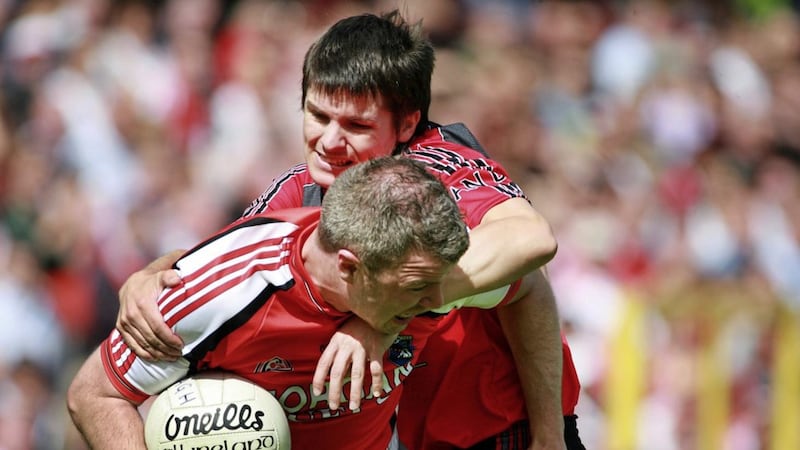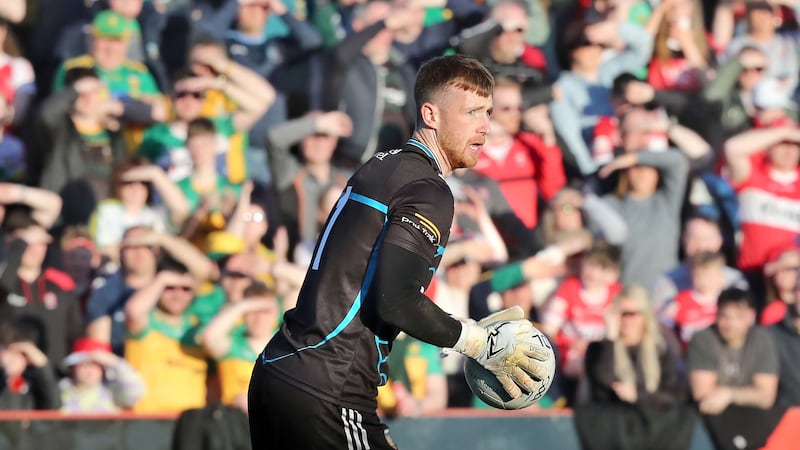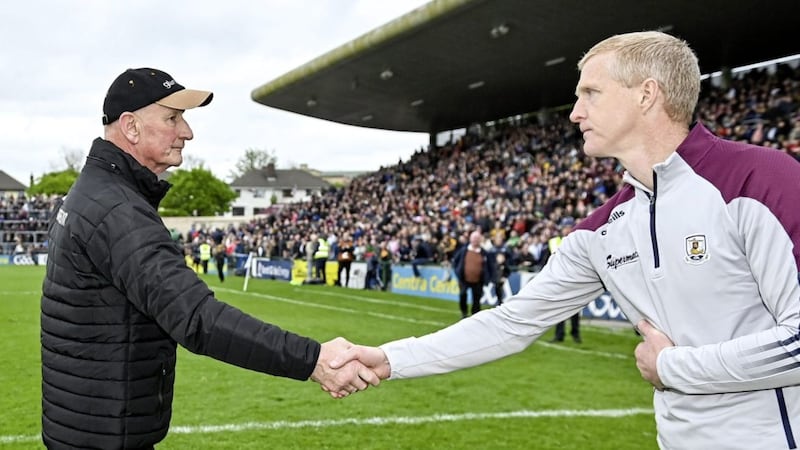THE GAA’s muscle has always resided in the parts of Ireland where sheughs divide loyalties.
You cannot say that’s always how it shall be.
For longer than any of us can remember, urban areas have been a coveted part of the overall strategy to win as many hearts and minds as possible.
When inter-county games stopped moving from pillar to post and counties settled on a home, so many of them put their roots down in the big population centres.
Look around the north particularly.
West Belfast. Derry city. Newry. Armagh. Enniskillen. Those are the cities and towns the thousands flock to on the big days. Have done for many years.
In the last couple of decades, the GAA has formalised its approach. The need for a strong Dublin led the flotilla and once the success of the project was recognised, a programme of urban funding was rolled out.
Look at the two counties second to Dublin in terms of funding – Cork and Derry. Then it’s Meath, Kildare and Laois, who fall under the East Leinster Coaching Programme that has been heavily funded in recent years.
Antrim are next, home to the Gaelfast project.
And yet the funding figures bear little relevance to playing numbers.
It’s a while back now but TUD lecturer Shane Mangan released figures in 2015 that showed the number of registered players in each county.
Derry, with just over 9,100 registered players at the time, was third in the list. Neighbours Tyrone, with 10,500 players, were fourth from bottom.
Donegal, with the biggest playing population of the nine counties at almost 14,000 registered players, were 26th on the list for funding.
On one hand, it’s easy to understand the targeting of urban areas.
But on the other, you have to begin to question the effectiveness of it.
The GAA fired an avalanche of money at Dublin and it needed every penny of it.
When they were trying to fight off Leinster rugby in the more affluent areas, particularly around Dalkey, coaches were given licence to hand out GAA goodies galore to kids.
Cuala’s success over the last decade bears testament to all that.
But there aren’t the same cash reserves now to throw at, say, Antrim.
£1million over five years for Gaelfast might sound like a lot but the £200,000-a-year pays for a small handful of coaches and someone to lead the project.
That someone was Dr Paul Donnelly, whose defection from the role was a significant blow. Covid has interrupted the flow of the entire operation and made it very hard to generate the outcomes Antrim and the GAA would have been hoping for.
Is growth all about money or is it something else altogether?
There are urban clubs in the north whose successes have been very little to do with money.
They’ve been built by the infiltration of outsiders who bring the gospel with them.
You can throw a heap of money at something but you can’t beat good men who know what they’re at and are willing to do it. They’re far harder found.
If urban development is a feasible objective for the GAA, then by all means, go after it.
It’s a seriously costly business though.
The schemes are starting to look like a football team that trains twice a week in the modern climate – if you’re not going to do it right, you’d be as well not doing it at all.
And while nobody has a crystal ball, will the onset of working from home reverse the trend of rural depopulation?
Because here is the very, very blunt reality of where GAA is at in the urban centres.
Between Derry city, Armagh city, Newry, Belfast, Enniskillen and Letterkenny, there are roughly 500,000 people living in those towns and cities, give or take.
In this year’s Ulster championship, no player from Derry city played a minute.
No player from Armagh city played a minute.
No player from Newry has played championship football for Down since Damien Rafferty retired in 2012.
Jonny Cassidy and Richard O’Callaghan were Enniskillen’s participants, while Niall O'Donnell and Shaun Patton were Letterkenny’s, the latter a star but almost an accidental Gaelic footballer having opted for soccer and played no GAA at all in early adulthood.
Belfast, if you include Glengormley, contributed seven of Antrim’s team that were beaten by Armagh.
______________________
2021 Ulster Football Championship
Derry city: 0 players
Armagh city: 0 players
Newry city: 0 players
Letterkenny: 2 players
Enniskillen: 2 players
Belfast: 7 players
______________________
That’s eleven footballers from half a million people in the types of areas that are seeing a disproportionate amount of GAA funding being thrown at them.
And in the case of seven from Belfast, don’t mistake it as progress - that’s three short of the ten city men they used in the 2009 Ulster final loss to Tyrone.
This is not year one or year three. In some cases, we’re not 20 years in. The fruits are, perhaps, yet to bear.
But it’s not year one either. Derry seniors still have no starting player from the city and the recent All-Ireland minor winning team had just one city representative on the squad, the impressive Donncha Gilmore.
To put that in context, when they last won the Tom Markham Cup in 2002, there were two, Marty Dunne and Paul O’Hea.
When they reached the 2007 final, there were three, Stephen Cleary, Neil Forester and Mickey McKinney.
Fifteen years into the project and despite the city’s expanding population, that number is down to one.
There’s still no city club in the senior grade. The rest are all in the bottom half of the junior league.
There were just two players used in Croke Park for the Christy Ring Cup final against Offaly.
Where’s the accountability for all the money that has been pumped in over the last 15 years?
That Newry has had no senior championship footballer in 10 years and that both the Shamrocks and Mitchel’s are struggling so badly is another indictment, although it has not enjoyed the same level of investment.
The U20 team that reached the weekend's All-Ireland semi-final also had no Newry representative.
Armagh have just Pearse Ógs and the Harps, both of whom have been successful in senior championship in the recent past, but have no current starting county player between them.
Equally, you must balance all of this against the improved performances of growing outfits like Magherafelt and Dungannon and Carryduff at club level.
Some of the big towns are starting to translate their numbers into success.
Counties on the whole are a whole lot further away from it.
A process of turning GAA wastelands into fertile ground was never going to be an easy one.
But at some point soon, the urban population centres have to start paying all this money back in the form of top-level players.








